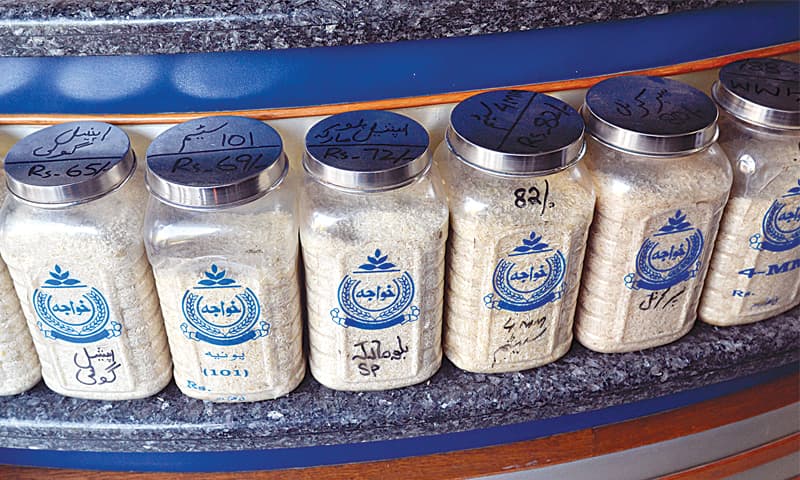KARACHI: They say no feast is complete without the rice dish be it in the shape of pulao, biryani, the plain white variety or sweet zarda. There are some people who don’t touch bread or roti and like having everything with rice. In the subcontinent, lentils and fish curry are usually eaten with plain white rice.
Rice as mentioned already can be cooked in many ways. Pulao is cooked in broth. There is also pea pulao or vegetable pulao that’s popular among children. Biryani, of course, is enjoyed with plenty of spices and meat and potatoes. Zarda or sweet rice is coloured saffron and is a popular dish for distributing when sharing any good news with friends.
But these are different ways of cooked rice. There are also different kinds of rice used for different kinds of dishes. You must have heard of Basmati, Saila, Tota, etc. But a visit to the retail market, Jodia Bazaar, introduces you to several more varieties of rice in different jars. There are varieties such as Kernel rice, Super Kernel, Irri-6, etc. There are other varieties too that are different in colour when compared with each other. Some are white, some off-white, some even grey. And all are priced differently. Buyers come all day examining the different varieties and taking or placing orders for what they need or like.
“The varieties are created during sorting to remove the brown peels that the thrashing in the fields didn’t do away with, stones within the grains, etc. During the process, the machines may break the grains which are separated to sell as Tota or broken rice,” explains Fahad Ahmed, a rice dealer.
“Saila rice doesn’t break easily. Since it’s rather stubborn, we steam it, which changes its colour from white to yellowish. Some varieties of Saila is double steamed as well,” he shares.
 |
| Sacks full of rice in a godown. |
“Some people prefer extra long grains that grow even longer when cooked. They don’t mind paying a little extra for it. Others who are price conscious and don’t care about the appearance go for the cheaper Tota,” he says.
“There is another variety of rice grown from Indian seeds, which is quite expensive. It is very expensive due to its beautiful long grains but it doesn’t taste as great as our local Basmati,” he says.
Asked then why is Pakistani rice not as much in demand as Indian rice when ours tastes better, the rice expert explains that Pakistan doesn’t fumigate the rice grains very well and the foreign buyers are pretty disgusted to find insects crawling in the rice we export. “Cleanliness matters,” he says.
 |
| The different varieties of rice on display in jars at a shop. |
When asked if it is dangerous to fumigate something that is going to be eaten, he shakes his head with a smile. “Why? Don’t we spray crops? Rice fumigation is not strong. The effect of the fumigation wears out with time. It is not dangerous.”
Published in Dawn, July 5th, 2015
On a mobile phone? Get the Dawn Mobile App: Apple Store | Google Play













































